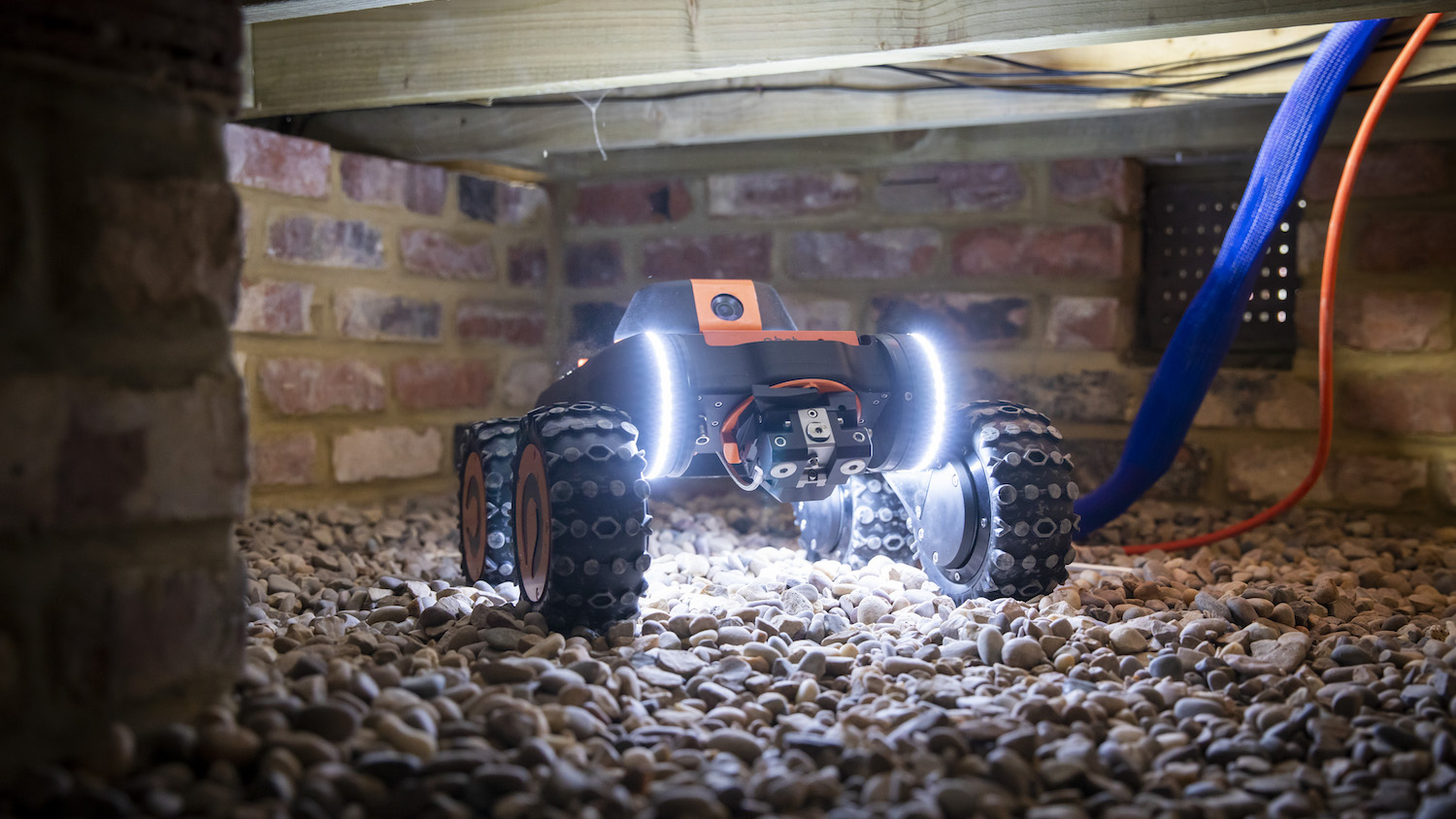
Professor Peter Childs, the co-inventor and founder of Q-Bot, talks to Denise Chevin about his aspirations for the intelligent insulating machine and future plans for the company.
The development of an innovative robotic device for insulating new homes had serendipitous beginnings. It was during a trade and industry trip to Israel over a decade ago that Professor Peter Childs, professorial lead in engineering design at the Dyson School of Design Engineering, Imperial College London, met architect Tom Lipinski: the result was Q-Bot, the robotic device that is being rolled out to retrofit homes and has recently completed a successful funding round securing £1.6m of investment to accelerate sales of its ‘Robot as a Service’ offering.
Childs reflects on their meeting: “Tom was telling me some of his frustrations about trying to get homes to be more sustainable. And we just had this delightful conversation where he would say something and I’d go, ‘Oh, what about that’.
“He explained that if you want to make a difference in homes, it requires you to get into a small space, whether it is under the floor, between the bricks in the cavity wall, through some conduit or duct. And I said, we can use mechanisms for that. We can use gadgets, we can use crawlers, we can use wire rope mechanisms, grippers, so many ideas. And then when we looked at it, we thought, ‘Ah, we’ve got something’.
“And when we came back to the UK, we hired two former students from Imperial to work over the summer. And they built our first ever robot and built a fake floor of a house to try it out on.”

‘We will see even more examples of robots doing more and more tasks. I see a particular space for ‘cobotics’ where the robot works alongside a person’
Q-Bot uses a robotic device to apply insulation under suspended floors of existing homes, and has insulated more than 3,000 homes since it came on the market in 2016. The solution is claimed to be cheaper, perform better and has none of the disruption of more traditional methods.
Now, nearly a decade after it was formed, the company has grown to 55 people. The robots are built in Wandsworth, south London and there are further operating bases in Wales and Newcastle.
Funding the future
The latest funding came largely from existing backers, Net Scientific, EMV Capital, and investment platform Wealth Club. The company offers a ‘Robot as a Service’ to accredited installation partners who carry out the work, although Q-Bot also does some installation itself. The funding will allow Q-Bot to expand through this network, which Childs says provides a means of scaling up the insulation process rapidly across housing associations and councils.
He adds: “When you start working with a partner, they bring innovations – ideas that we might not have thought of and, of course, they bring scale.”
He acknowledges that Q-Bot got off to a bit of a slow start: he feels they launched before the technology was quite ready. The team is now working on the Mk7 robot, which Childs says is extremely reliable and that “we’ve reached the point where we can scale”. He says there are 12 million homes in the UK alone that would benefit from this type of insulation and millions more in North America and continental Europe as well as other countries.
Q-Bot Mk 7 is about a third of the size of the original – little larger than a shoebox. Childs explains: “The robot has great machine vision cameras with various sensors and sophisticated software, so it will determine where to spray. It then sprays the thermal insulation in layers on the underside of your floorboards. And because the cavity is not open to sunlight, the materials we use should actually last generations.” The work is guaranteed for 25 years.
The challenge for entrepreneurs
Childs says: “It’s tough doing technical development and innovation if resources are tight. So unless you have revenue from another source, such as a previous product idea, grant or investment, you will have to leverage every free resource you can in order to advance your ideas.
“The challenges are how long can you sustain focus and resources on an area for which there is a market and then how to effectively leverage your developments to actually get into the market.
“In the end, it comes down to focus: if you are in a development phase, then you need to focus on completing the development so you can move into revenue. If you have a product already, then focussing on revenue from that product will enable funding for the next development.”
Childs says that it takes nine to 12 months to get into carbon credit, i.e. a net saving once the carbon used for the materials and insulation is factored in. Financial payback comes after about nine years – although that timeframe is reducing with the sharp rise in the price of energy. The underfloor insulation is complementary to other energy saving measures needed to raise a home’s performance by EPC grades.
The funding will help build more robots to fulfil the growing number of partner companies renting them to provide the underfloor insulation service. If the business stayed the same size, it would now be breaking even and getting into profit – but with so much potential, the strategy is one of growth. He anticipates another funding round will be needed later this year to meet demand.
The future of robotics
Although there are constant calls from campaigners and consumer groups for government to provide greater incentives for the installation of insulation measures, Childs can see both sides: “The challenge for government is promoting policy that is ‘fair’ – so should I as a homeowner who has a nice home already get a subsidy to improve it? That’s one way of looking at it. But the other way to look at it is that energy-guzzling homes are harming society. So there are times when we do need to accept that subsidies for measures which help society are necessary.
“And I would suggest that there are a series of interventions that are reasonably affordable for homes, which will help tackle the £3,000 a year energy bill that everybody’s worried about. And this is one of those.”
Asked about the future of robots in construction, he says: “Robots have been exciting the world for the last 70 years or more, with prospects for robots doing the work, while we sit around and see the benefits. While this vision has flaws and has not come about, the technology has now advanced so that many work tasks are now amenable to robots doing them.
“In construction, we have already seen gantry-mounted robots producing walls, producing building components and doing building inspections. With time, we will see even more examples of robots doing more and more tasks. I see a particular space for ‘cobotics’ where the robot works alongside a person, perhaps doing repetitive mundane or dangerous tasks, while the person undertakes more sophisticated functions.”
As well as Q-Bot, Childs is involved with BladeBUG, the company that developed a six-legged robot to carry out the inspection, repair and maintenance of offshore wind turbines.
Don’t miss out on BIM and digital construction news: sign up to receive the BIMplus newsletter.












